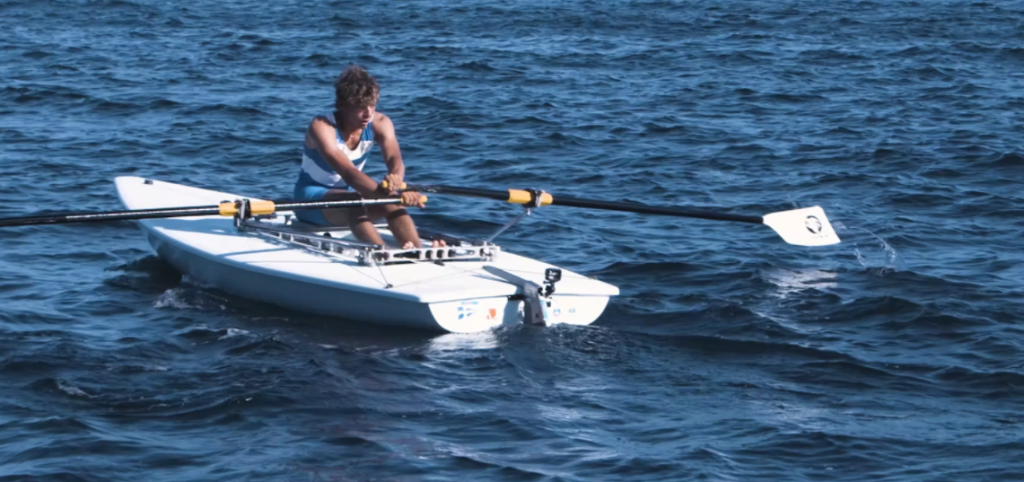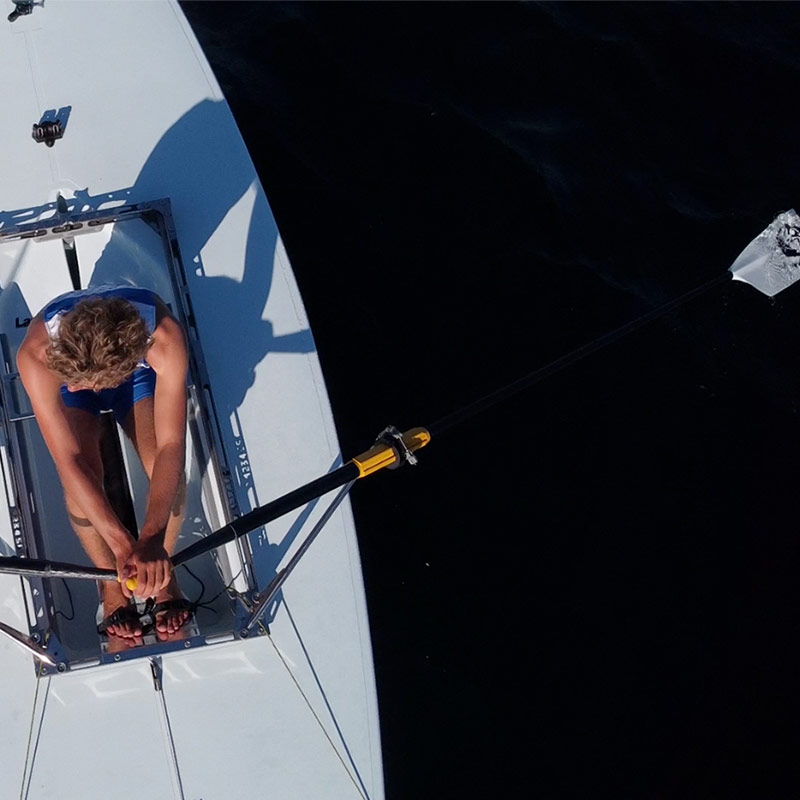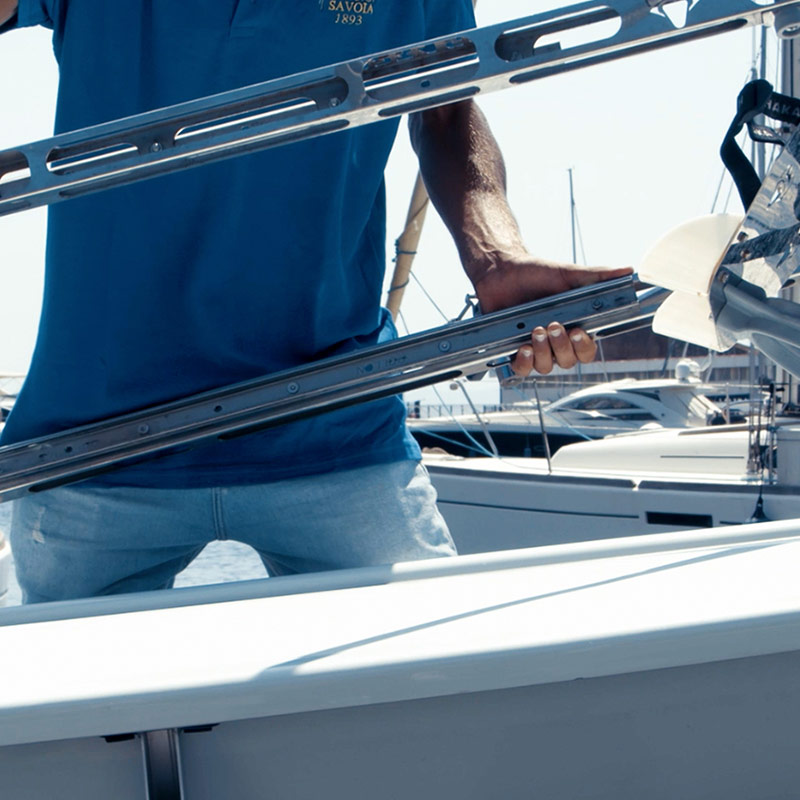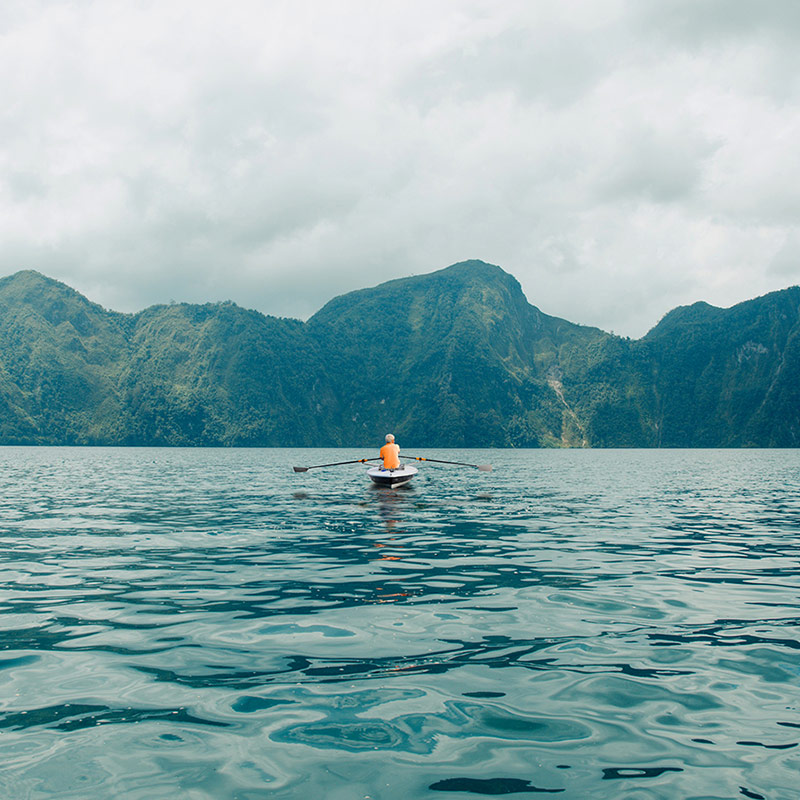F3Studio for Haka International.
CE marking of a coastal rowing boat.

Haka International
The Haka Boat is a monotype coastal rowing boat based on the innovative Haka Kit, which converts a Laser hull into a rowing boat.
Invented by the engineer Bartolomeo Mongiardino, Haka boat makes rowing easy to learn thanks to its stability and robustness. The project’s uniqueness comes from the fact that over 200,000 Laser hulls are already in use for sailing around the world and are ready to be fitted with a Haka Kit.
What makes Haka different from other rowing boats on the market?
Olympic-style rowing boats are designed by specialized manufacturers that experiment with new designs in order to achieve the best performance. This results in fast, but expensive, boats.
The Haka’s goals are:
1- Ensure competitions in which individuals’ abilities are measured and no advantages from a better performing hull are possible.
2- Reduce the costs in order to allow a larger audience to train and race safely on proven hulls.
F3Studio assisted Haka International in transforming this R&D project into a CE-certified product ready for commercialisation.

What F3Studio did
In order to sell this innovative kit, the product must be CE certified and meet certain European safety directives.
F3Studio studied industry rules and regulations to determine which were applicable.
The Haka coastal rowing boats are based on:
– The Laser hull and rudder
– The patented Haka Kit that transforms the Laser into a coastal rowing boat.
Unlike the many products F3Studio has dealt with in the past, which range from superyachts to industrial machinery, the CE marking in this case refers to a product that will be installed on an existing hull that already has his own CE certification.
An in-depth examination of the rules was required to determine whether a re-certification of the hull was required, which led F3Studio to approach the RINA through a consultant.
Thanks to our extensive experience in the marine world, we perfectly understand how such a sport activity, performed in close contact with nature, can bring satisfaction and leisure.
Being sea-lovers, we are pleased to have been able to contribute to making the Haka Kit available on the market and safe.
Haka Kit and the Olympic spirit
Up to 50 years ago, sailing was an elitist sport, then the Laser made his appearance in the early 70’s.
This monotype hull was well-received: nowadays there are 220 000 Laser hulls in 120 countries and it became an Olympic class in 1996.
In 2028, at the Olympic Games in Los Angeles, coastal rowing will be an Olympic sport.
Unfortunately the current coastal rowing boats are 6m long, and this can represent a barrier to the spread of the discipline. It is difficult to carry such a long boat, and so people must rely on rowing clubs in order to train.
The Haka is designed to overcome this obstacle: being based on the laser hull it can be easily carried on the roof of a car.
Haka embodies the Olympic spirit: it is a monotype that aims to make coastal rowing more accessible.

We were looking for a company that could help us with the CE marking and were experienced in the recreational boating industry. We chose F3Studio, based in Genoa, a city where the naval industry has a long heritage , and we are very satisfied
Mech. Eng. Bartolomeo Mongiardino
Instruction manual
Haka is a product designed to allow as many people as possible to participate in coastal rowing.
As a result, security is a critical factor, both in terms of reliability as well usability.
Assembling the kit must be simple, requiring few tools and the process for doing so must be intuitive and well-explained by the instructions.
F3Studio has included some illustrations, including axonometries of the kit and details of key components, in addition to a textual description of the operations.
This type of visual communication is commonly used in manuals aimed at a broad public audience, and the majority of users are already familiar with it.
The assembly process is made clearer by a purposeful and effective use of colors, arrows, graphic symbols, and illustrations. Video instructions have also been created in this case, which can be accessed by scanning a QR code.

Technical construction file
We helped Haka International with the risk analysis and the developing the technical construction file following the general product safety directive 2001/95/CE.
In addition to the instruction manual, the technical construction file includes:
1- Design and manufacturing drawings
Describing the kit, specifying the various components and materials in a bill of material.
In this way the users can check if they correctly received all the components before proceeding with the assembly.
2- List of the applicable rules and regulations.
List and reference of the various rules and regulations and harmonized standards.
F3Studio pointed out in a concise table which parts and sections of the regulations were applicable/not applicable, explaining the reason.
3- The risk assessment.
4- A glossary of terms and abbreviations.
5- CE conformity Declaration.
Writing an instruction manual it’s a difficult task because of the translation that’s required: the person doing the work already knows what they’re trying to teach.
But the person interacting with the manual doesn’t.
After all, the person you’re instructing doesn’t know yet what you know.
They might not learn the way you learnSeth Godin
The last phrase points out how we process and elaborate information in different ways. For example, some of us prefer to read while others learn better by listening to podcasts or watching videos.
F3Studio’s opinion is that to make the instructions easy to understand for a wide public we need to make them available in different formats, both written, with drawings, and video.
F3Studio
F3Studio has over 20 years of experience in a variety of fields, including mechanical industry, machine tool, packaging, marine, lighting technology and luxury goods.
As a cross-industry company, we import best practices from various industries.
For example, the architecture and furnishing industries, which export their products all over the world, have heavily emphasized the visual aspects of communication, reducing the amount of text that must be translated and making the instruction more user-friendly.
In other fields where safety is critical, the emphasis is on checklists and mistake-proofing operations.
Our involvement in various fields has improved our ability to adapt to our customer’s work process in a non-intrusive manner.
